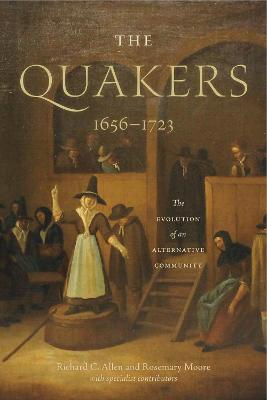The New History of Quakerism
2 primary works
Book 1
The Society of Friends, also known as the Quakers, originated in England during the civil wars of the mid-seventeenth century. Early Quakers have been variously described as founders of a fundamentally new form of spiritual practice, as the radical end of the Protestant Reformation, and as political revolutionaries. In The Light in Their Consciences, which recounts the earliest history of the Friends in England, Rosemary Moore suggests that all of these characterizations are accurate and can help us grasp the true significance of Quakerism.
Moore offers compelling portraits of the leading figures of the Quaker movement, notably George Fox, James Nayler, and Margaret Fell. She shows their interrelationships and documents the emergence of George Fox as the leading Friend, relying not so much on Fox's own proclamations as on the perceptions of both his followers and his enemies as reflected in correspondence and printed pamphlets. Moore also charts the growth of a genuine denominational consciousness among Friends. This leads her to continue her account past the customary stopping point of 1660-the Restoration of Charles II-up through 1666. It was in that year that Fox initiated major organizational reforms that signaled the true dividing line between the early charismatic Quaker movement and the introverted sect of the later seventeenth century.
The Light in Their Consciences combines a lively narrative with impeccable research. Moore draws upon unprecedented computer-based analysis of all the contemporary Quaker and anti-Quaker literature. Her account will interest historians, theologians, and members of the Society of Friends throughout the world.
Book 2
This landmark volume is the first in a century to examine the “Second Period” of Quakerism, a time when the Religious Society of Friends experienced upheavals in theology, authority and institutional structures, and political trajectories as a result of the persecution Quakers faced in the first decades of the movement’s existence.
The authors and special contributors explore the early growth of Quakerism, assess important developments in Quaker faith and practice, and show how Friends coped with the challenges posed by external and internal threats in the final years of the Stuart age—not only in Europe and North America but also in locations such as the Caribbean. This groundbreaking collection sheds new light on a range of subjects, including the often tense relations between Quakers and the authorities, the role of female Friends during the Second Period, the effect of major industrial development on Quakerism, and comparisons between founder George Fox and the younger generation of Quakers, such as Robert Barclay, George Keith, and William Penn.
Accessible, well-researched, and seamlessly comprehensive, The Quakers, 1656–1723 promises to reinvigorate a conversation largely ignored by scholarship over the last century and to become the definitive work on this important era in Quaker history.
In addition to the authors, the contributors are Erin Bell, Raymond Brown, J. William Frost, Emma Lapsansky-Werner, Robynne Rogers Healey, Alan P. F. Sell, and George Southcombe.

